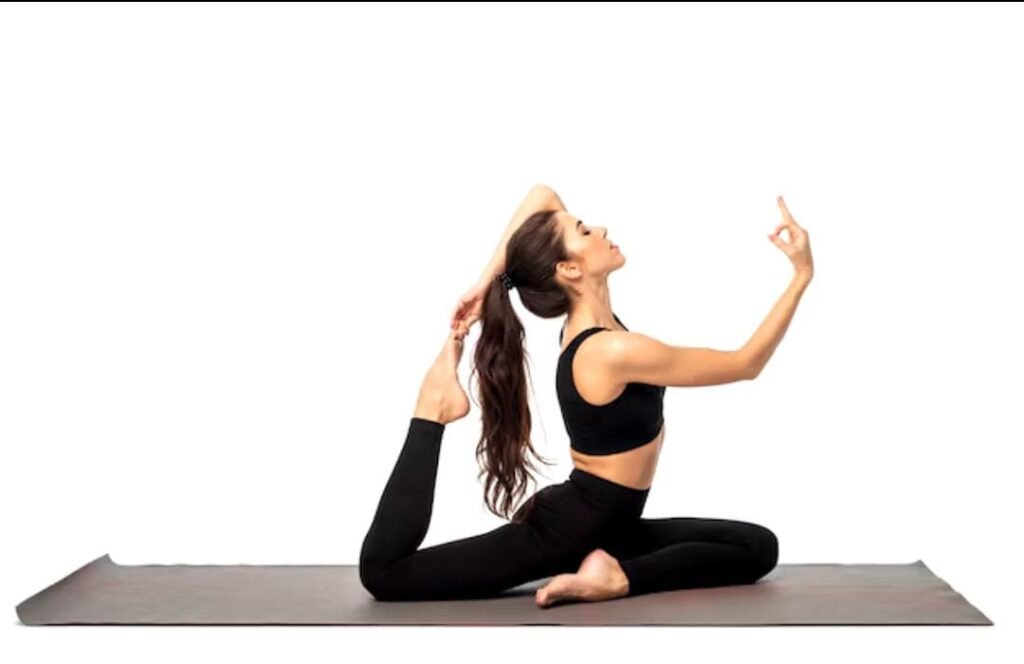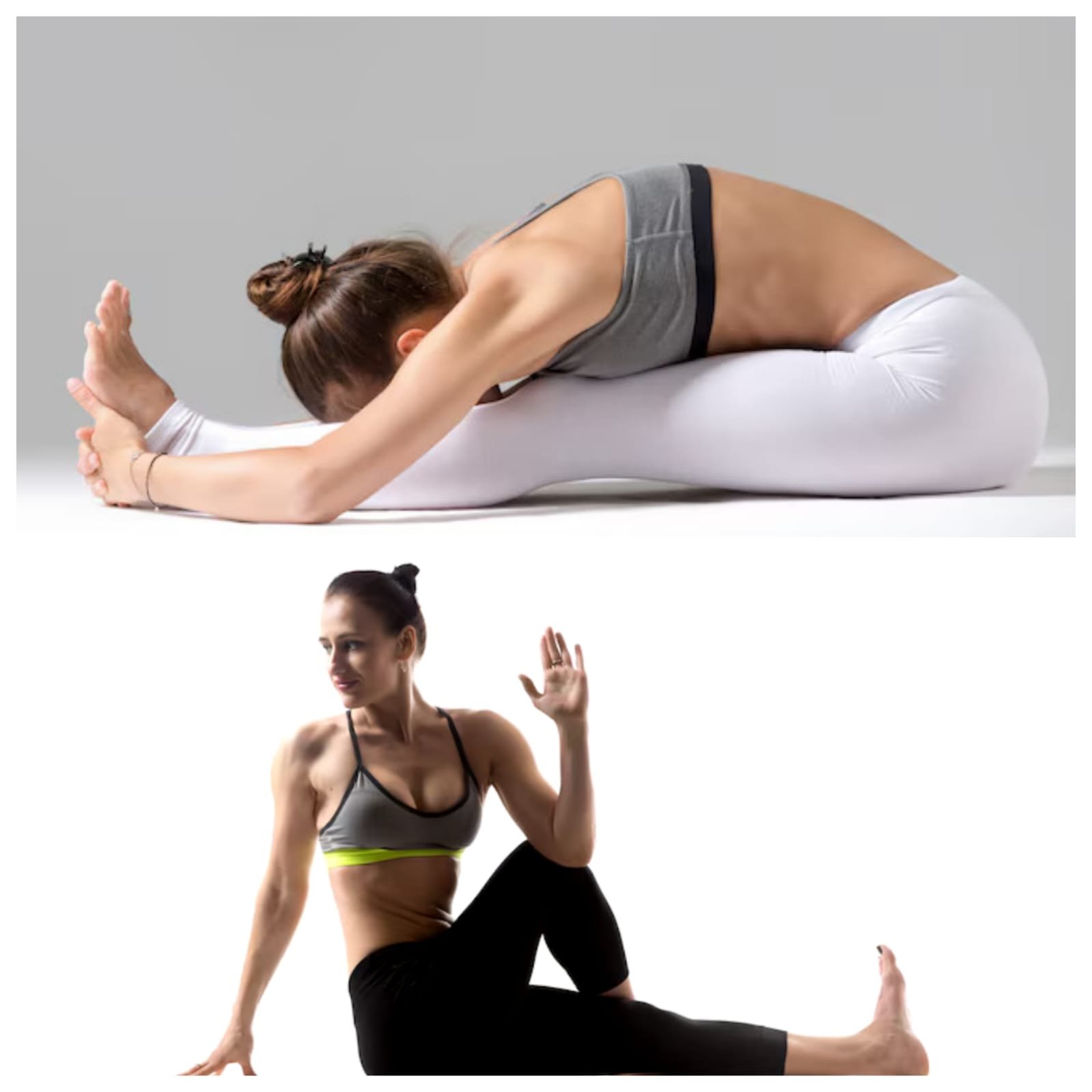“Yoga for Stress and Metabolism: Daily Benefits”

- “Yoga for Stress and Metabolism: Daily Benefits”
Introduction
In today’s fast-paced world, stress has become an almost inevitable part of daily life. Balancing work, family, and personal responsibilities can lead to physical and mental exhaustion, affecting overall well-being. Amidst this chaos, yoga emerges as a powerful practice that not only aids in stress relief but also enhances body metabolism, promoting holistic health. Originating in ancient India, yoga is a mind-body discipline that combines physical postures, breathing techniques, and meditation to foster harmony between the body and mind. This article explores the myriad benefits of yoga, focusing on how incorporating it into daily activities can effectively alleviate stress and boost metabolism.
Understanding Yoga and Its Holistic Benefits
Yoga is more than just a form of physical exercise; it is a comprehensive system that addresses physical, mental, and spiritual health. The practice encompasses various styles and techniques, each tailored to achieve specific health outcomes. Some of the overarching benefits of yoga include:
- Improved Flexibility and Strength: Regular practice enhances muscle flexibility and strength, promoting better posture and reducing the risk of injuries.
- Enhanced Mental Clarity: Yoga encourages mindfulness and concentration, leading to improved focus and cognitive function.
- Better Respiratory and Cardiovascular Health: Breathing exercises (pranayama) improve lung capacity and heart health.
- Stress Reduction: The combination of physical movement, breath control, and meditation helps lower stress levels and promotes relaxation.
- Balanced Metabolism: Yoga stimulates various bodily systems, aiding in efficient metabolism and weight management.
- Emotional Stability: The practice fosters emotional balance by reducing anxiety and depression symptoms.
Yoga for Stress ReliefStress manifests in various forms, impacting both mental and physical health. Chronic stress can lead to numerous health issues such as hypertension, insomnia, depression, and weakened immune function. Yoga offers effective tools to manage and alleviate stress through a combination of physical postures, breathing techniques, and meditation.1. Physical Postures (Asanas) for Stress ReliefAsanas are designed to release physical tension, calm the nervous system, and promote relaxation. Here are some effective poses for stress relief:
- Child’s Pose (Balasana):
- Benefits: Gently stretches the lower back, hips, and thighs while calming the mind and relieving stress.
- How to Perform: Kneel on the floor with big toes touching and knees hip-width apart. Sit back on your heels, extend your arms forward, and rest your forehead on the mat. Breathe deeply and hold for several breaths.
- Standing Forward Bend (Uttanasana):
- Benefits: Releases tension in the spine, neck, and shoulders; increases blood flow to the brain; calms the mind.
- How to Perform: Stand with feet hip-width apart, inhale and raise your arms, then exhale and fold forward from the hips, allowing your head and arms to hang freely. Hold for several breaths, then slowly rise back up.
- Corpse Pose (Savasana):
- Benefits: Promotes deep relaxation and stress reduction; rejuvenates the body and mind.
- How to Perform: Lie flat on your back with arms and legs comfortably spread, palms facing up. Close your eyes and focus on deep, steady breathing. Remain in this pose for 5-10 minutes.

2. Breathing Techniques (Pranayama) for Stress Management
Controlled breathing is central to yoga and plays a significant role in reducing stress and anxiety by influencing the autonomic nervous system.
- Alternate Nostril Breathing (Nadi Shodhana):
- Benefits: Balances the left and right hemispheres of the brain; reduces anxiety; improves focus.
- How to Perform: Sit comfortably, close your right nostril with your right thumb, inhale through the left nostril, then close the left nostril with your ring finger and exhale through the right nostril. Continue this pattern for several cycles.
- Deep Diaphragmatic Breathing:
- Benefits: Lowers heart rate and blood pressure; promotes relaxation; reduces stress hormones.
- How to Perform: Sit or lie down comfortably. Place one hand on your chest and the other on your abdomen. Inhale deeply through the nose, allowing your diaphragm to expand and your belly to rise. Exhale slowly through the mouth. Repeat for several minutes.
- Lion’s Breath (Simhasana):
- Benefits: Releases tension in the face and chest; reduces stress; boosts energy.
- How to Perform: Kneel with your hands on your knees. Inhale deeply through the nose, then open your mouth wide, stick out your tongue, and exhale forcefully while making a “ha” sound. Repeat several times.

3. Meditation and Mindfulness Practices
Meditation is integral to yoga, providing mental clarity and emotional stability by encouraging present-moment awareness.
- Mindfulness Meditation:
- Benefits: Reduces stress and anxiety; enhances emotional regulation; improves focus.
- How to Perform: Sit comfortably with eyes closed. Focus your attention on your breath, noticing each inhale and exhale. When thoughts arise, acknowledge them without judgment and gently return your focus to the breath.
- Guided Imagery:
- Benefits: Promotes relaxation; reduces stress; enhances mood.
- How to Perform: Sit or lie down comfortably. Close your eyes and visualize a peaceful scene, such as a beach or forest. Engage all your senses to immerse yourself in the scene fully. Spend several minutes exploring this mental landscape.
- Loving-Kindness Meditation (Metta):
- Benefits: Increases compassion and empathy; reduces stress; fosters positive emotions.
- How to Perform: Sit comfortably and bring to mind someone you care about. Silently repeat phrases wishing them well, such as “May you be happy, may you be healthy, may you be safe.” Gradually extend these wishes to yourself and others, including neutral and difficult individuals.
Incorporating Yoga into Daily Activities for Stress Relief
Integrating yoga practices into your daily routine can significantly enhance stress management and overall well-being.
Morning Routine:
Begin your day with a short sequence of gentle asanas and deep breathing exercises to awaken your body and mind, setting a positive tone for the day ahead.
Work Breaks:
Take brief pauses during work to practice simple stretches and mindful breathing, helping to alleviate accumulated tension and maintain focus.
Evening Wind-Down:
Engage in relaxing yoga poses and meditation before bedtime to calm the nervous system and promote restful sleep.
Mindful Walking:
Incorporate mindfulness into daily walks by focusing on each step, the sensation of your feet on the ground, and the surrounding environment, helping to clear the mind and reduce stress.
Yoga at Your Desk:
Practice seated twists, neck stretches, and wrist rotations while at your desk to relieve muscle tension and improve circulation throughout the day.
Yoga Nidra (Yogic Sleep):
Benefits: Deep relaxation technique; reduces stress and balances hormones affecting metabolism.
How to Perform: Lie comfortably on your back, close your eyes, and follow a guided meditation that leads you through various stages of relaxation and awareness.Yoga and Body MetabolismMetabolism refers to the complex processes by which the body converts food into energy. A well-functioning metabolism is essential for maintaining energy levels, supporting bodily functions, and managing weight. Yoga plays a significant role in enhancing metabolism through various mechanisms.1. Stimulating the Endocrine SystemThe endocrine system regulates hormones that control metabolic processes. Certain yoga poses stimulate endocrine glands, promoting hormonal balance and efficient metabolism.
- Shoulder Stand (Sarvangasana):
- Benefits: Stimulates the thyroid gland, which plays a crucial role in regulating metabolism.
- How to Perform: Lie flat on your back, lift your legs and hips upward, supporting your lower back with your hands. Keep your body aligned and hold the position for several breaths before slowly lowering down.
- Fish Pose (Matsyasana):
- Benefits: Stimulates the thyroid and parathyroid glands; improves digestion.
- How to Perform: Lie on your back, arch your back by lifting your chest, and place the crown of your head on the floor. Keep your legs extended and arms alongside your body. Hold for several breaths.

2. Enhancing Digestion
Efficient digestion is vital for proper nutrient absorption and metabolic health. Yoga aids digestion by massaging and stimulating abdominal organs.
- Seated Forward Bend (pachimottanasana):
- Benefits: Stimulates the digestive organs; improves metabolism.
- How to Perform: Sit with legs extended in front of you. Inhale and raise your arms, exhale and fold forward, reaching for your feet. Hold the pose while breathing deeply.
- Spinal Twist (Ardha Matsyendrasana):
- Benefits: Massages abdominal organs; aids in digestion and detoxification.
- How to Perform: Sit with your legs extended. Bend your right knee and place your right foot outside your left thigh. Twist your torso to the right, placing your left elbow outside your right knee. Repeat on the other side.

3. Building Muscle and Reducing Fat
Yoga involves holding various poses that build muscle strength and promote fat loss, thereby enhancing metabolic rate.
- Warrior II (Virabhadrasana II):
- Benefits: Strengthens legs, core, and arms; boosts stamina and metabolism.
- How to Perform: Stand with legs wide apart, turn your right foot out 90 degrees and left foot slightly in. Bend your right knee over your ankle, extend your arms out to the sides, and gaze over your right hand. Hold for several breaths and switch sides.
- Plank Pose (Kumbhakasana):
- Benefits: Builds core strength; increases metabolic rate.
- How to Perform: From a push-up position, align your wrists under your shoulders, keep your body in a straight line, and engage your core muscles. Hold for several breaths.

4. Reducing Stress-Induced Metabolic Issues
Chronic stress can negatively impact metabolism by affecting hormone levels and leading to weight gain. Yoga’s stress-reducing effects help mitigate these issues, promoting a balanced metabolism.









2 thoughts on ““Yoga for Stress and Metabolism: Daily Benefits””